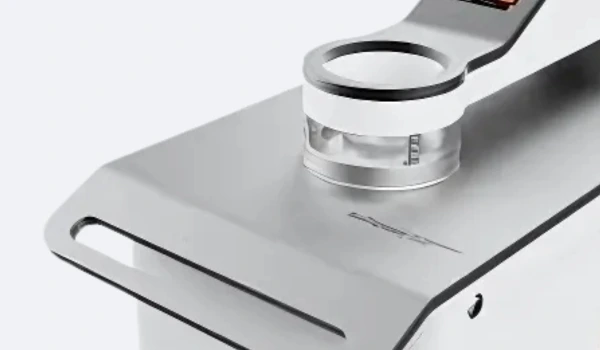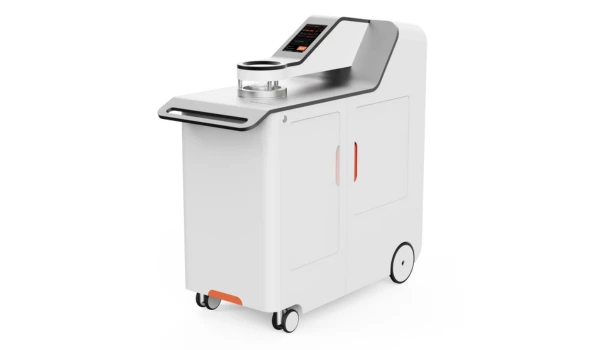Troubleshooting and Calibration of Air Permeability Testers
What is air permeability? What measures do we use to test air permeability? Which type of instrument measures air permeability? How do you Troubleshoot and Calibrate air permeability testers?
In this article, we will examine air permeability and testers.
Air Permeability of Fabric

Air Permeability of Fabric
“The air permeability of a fabric means how much air can pass through it.” The air permeability value of a fabric refers to the quantity of air that flows through it. Air volume is measured in millimeters, so for the evaluation of the AP of a fabric, we use the millimeters unit.
Significance of Air Permeability
Air permeability testing in textiles plays a very important role in the manufacturing and developing of industrial filters, tents, sailcloths, parachutes, raincoat materials, shirting’s, Downproof fabrics, and airbags.
It is a crucial factor for sportswear, home textiles, and protective clothing. This parameter gives the understanding of selecting the material for developing such textiles and products.
The required AP value for sportswear and shoes must be considered during design and manufacturing. It is a significant parameter for household textiles like beddings, curtains, and furniture covers.
Air permeability affects comfort level, making it a key parameter for textiles like clothing, apparel, medical fabrics, upholstery, and sportswear.
Factors Affecting Air Permeability
Structure of Fiber and Yarn
The fabric made from thicker fiber has more breathability as compared to thin fibers. Thick fibers have more free space between two consecutive threads.
Similarly, if the fiber is more uniform, then it has lower permeability because it reduces the space between connecting threads.
Weaving Structure
The weaving structure directly affects fabric porosity and breathability. Compared to the satin weave structure, the plain weave structure allows less air to pass through. We use different types of weaving structures to give the fabric strength and manage porosity.
Processing
The textile processing has multiple steps that affect the air permeability behavior. For example, singing slightly increases the AP value by reducing fiber fuzz, which allows more air to pass through the fabric.
The dyeing and finishing process shrinks the fabric, which makes the fiber more compact and reduces the porosity. Lamination and coating also reduce the AP by closing the pores.
The calendaring effect also reduces the AP by compressing the fabric, which makes it smoother and denser. Waterproof finishes reduce the air permeability by blocking the pores.
Weight reduction processes make the fabric thinner and make it more porous, which increases the air permeability.
Measurement and Units
Air Permeability Measurement Standards
For example, suppose we take a 100 square meter fabric, then how much air passes through this fabric in one second if we apply the pressure difference of 10 mm head of water. The AP of a fabric refers to the amount of air that passes through it.
In the British standard, we measure the (AP) of fabric at a constant pressure drop of 10 mm of head of water from a specific area of the fabric. There are taken five results were taken with a test area of 25.4 mm diameter. The air flow is measured in mm2 per second.
Factors Affecting Accurate Air Permeability Results
Air resistance equals the reciprocal of air permeability. It is defined as the time required in seconds for the volume of air to pass through 100 mm2 of a fabric under a pressure head of 10 mm of water.
Efficient clamping across the fabric specimen becomes mandatory to get accurate results because air leakage leads to false results.
To determine the AP of a fabric, two things are considered: air flow through the fabric and pressure drop due to the resistance of fabric against airflow. So, by considering these parameters, air permeability testers measure the value in (cm³/s/cm²).
Air Permeability Test Standards for Textiles

Air Permeability Test Standards for Textiles
Different countries use various air permeability standards internationally. Let’s see what those standards are and on what principle they work.
ASTM D737
The ASTM D 737 is a simple and easy way to check the AP value of a fabric. Clothing and household textiles especially undergo this test. It measures how easily air can pass through the fabric. We can say it measures the breathability of a fabric.
The test is performed using an airflow tester, on which fabric is placed on a circular opening, and air is passed through the specimen. The clamping system secures the fabric in position without causing any distraction.
The unit for this standard is cubic feet of air per minute f3/Min (CFM).
ISO 9237
The ISO 9237 standard is similar to ASTM D737. This testing method measures the breathability of a fabric per square meter. ISO 9237 is mostly used in Europe for determining the AP of nonwoven fabrics and industrial textiles.
The unit for this standard is l/m2/s. It means that this testing method measures the airflow rate in liters from a square meter of a fabric per second.
GB/T 5453
It is the Chinese test standard for determining the passage of air perpendicularly through the fabric specimen. This standard is used for non-woven, industrial, and clothing textiles.
The GB/T 5453 standard deals with not only the passage of air but also water vapors. It depends upon the test requirements from the customer.
JIS L 1096
The JIS L1096 is a Japanese test standard for measuring the airflow through the specified area of a fabric specimen. This testing method is mostly used in the Japanese textile industries.
DIN 53887
The DIN 53887 is a German textile testing standard for the air permeability of a fabric. It also works like the above standards. DIN 53887 air permeability standard determines the fabric (AP) values by holding the specimen on the tester’s head with a diameter of 20 cm.
The air is passed through the specimen. It measures the airflow in meters, in a specified area of a square meter fabric, in one second. Its unit is expressed in l/m2/s.
Air Permeability Testing Equipment
To determine the AP of a fabric, air permeability testing is done by using air permeable testers. Here we will discuss the best air permeability tester for textile materials.
The ChiuVention industrial air permeability tester is specially designed for measuring the AP of textiles & nonwoven fabrics.
ChiuVention tester can be attached to your smartphone and computer. It operates with the ERP/LIMS system and follows the guidelines of GB/T5453, ISO 9237 and ASTM D737.
Air Permeability Testing Equipment
Key Components & Functionalities
ChiuVention air permeability tester has the measuring range of 1–10,000 l/m²/s. It has cm2 circular testing head. Let’s see the key components of this tester and its functionalities.
Orifice Plate
The (AP) tester has a multi range of orifice plates from 5 – 100 cm2. It can be used based on fabric type and requirements. If you need a large orifice, then you can replace the plate according to the desired orifice.
The ChiuVention (AP) tester has the intelligent system which self recognize the orifice plate and changes the setting mode automatically for that plate. In this way technician can work easily on different orifices 5cm2, 20cm2, 50cm2, and 100cm2.
Test Head
The tester has a test head, which holds the specimen firmly through a clamping mechanism system. It avoids the air leakage which helps to get accurate results.
Guard Rings
The guard rings are also used for thick fabrics, which gives extra support and holds the specimen at its position tightly.
Airflow System
The instrument has an efficient airflow system, which forces the air to pass through the fabric. There is used an electric blower is used to give air flow with precise pressure.
Flow Meter
A flow meter is attached to the airflow system to measure the air flow rate. It measures the airflow rate in dm3/Min.
Pressure Gauge
Tester utilizes a pressure gauge to determine the pressure drop during the airflow. The pressure drop range is 50 Pa – 200 Pa.
How to Perform Air Permeability Tests on Fabrics
The air permeability test is performed through AP testers. Fabric is specimen is prepared according to standard conditions, and then it is placed on the tester head. The specimen is locked through the clamping system.
Let’s see the air permeability test procedure step by step.
Sample Preparation
The fabric specimen is taken for performing the AP test. The fabric should be cut according to orifice standard. As we know, the orifice size varies from 5 cm2 to 100 cm2, so we should keep in mind which orifice will be used for performing the test.
Specimen is cut extra from orifice area to hold it firmly on the tester head.
Specimen Conditioning
After cutting the specimen, the sample is conditioned at 21°C and 65% relative humidity for at least 08 hours.
Trim Specimen Edges
Now, trim the specimen edges to make it neat and clean. Unnecessary threads at the edges could go in the orifice area, so to get more precise results, prepare the sample in neat and clean conditions.
Setup the Instrument
Set the instrument, testing parameters, and do calibration before starting the test. It helps to know that the instrument is working in proper condition.
Place the Specimen on the Tester Head
As instrument is ready to do testing, place the fabric specimen on the tester’s head. The clamping system will hold the specimen firmly to avoid air leakage.
Start Test
Push the start button, the airflow will start to pass through the fabric specimen. The pressure gauge will monitor the pressure difference, and the flow meter will tell the airflow rate through the fabric.
Test Results
The tester will show the air permeability test results in L/m²/s. Not the readings. Perform the same procedure for 5 specimens and then take the average results. Compare the results with standard values, and make the decision of pass or fail.
Methods for Calculating Air Permeability in Fabric Testing
There are commonly two types of methods for calculating air permeability in fabric testing. Both methods apply according to the required conditions and focus.
Gurley Method
If we have to know the time for passage of air through the fabric, under specific defined pressure, then the Gurley method is used.
Frazier method
If we have to know how much volume of air passes through the fabric in a unit under specific defined pressure, then we will use the Frazier method.
Common Issues and Troubleshooting

Common Issues and Troubleshooting
There are some common issues that you may face during the air permeability testing. Let’s see issues and strategies for troubleshooting air permeability testing equipment to maintain optimal performance.
Tester Calibration
The improper calibration leads to false results. So, to avoid this issue, we can get accurate results. Technician should follow the instrument manual and supplier guidelines for right calibration.
Sample Preparation
It is seen that sometimes, technicians do not prepare samples carefully due to excessive workload, which may cause the faulted results.
The right sample preparation is mandatory for getting accurate results. Specimen should be neat, clean with trimmed edges, and there should be no crease or bend in the specimen.
Environmental Conditions
Environmental conditions can sometimes cause problems, such as varying temperature and humidity levels.
It solution is always to conduct lb testing in controlled environmental conditions. The ideal conditions are room temperature or 21 °C and 65% relative humidity.
Clamping System
Loose clamping would not hold the specimen tightly at its position, which will cause air leakage. So, ensure the tight clamping before starting the test to avoid any leakage of air.
Human Error
Untrained lab staff or an irresponsible technician will cause the human error. So, to minimize human error, give proper training to your lab staff.
Lab technicians can reduce human error by following the standard guidelines of the air permeability test.
Calibration of Air Permeability Testers
The regular calibration of the air permeability tester is mandatory for getting more accurate and precise results. It helps to meet the requirements of air permeability test standards for textiles like ASTM D737 and ISO 9237.
Why Calibration is Important?
Tester Safety and Longevity
Regular and on-time calibration is very important for the instrument’s safety and longevity. It increases the life span of the machine.
Accurate and Precise Results
Proper calibration helps to get more accurate and precise results without the risk of doubtful readings.
Quality Control
Poor calibration will lead to false readings, which will affect the performance of the quality control department. It will forward the defective items, which will create a problem for company reputation and customer satisfaction.
Meet Regulatory Compliance
A tester with Improper calibration will not give accurate results. So, other countries have strict regulations on the purchase of air-permeable fabrics.
The timely calibration of instruments keeps the machine in proper working condition, which helps to meet the regulatory compliance of other countries.
Product Development
A tester that is getting proper, timely calibration will give accurate results. It will help the manufacturer to improve the product quality according to customer demand.
Air Permeability Tester Calibration Methods
Technicians calibrate the air permeability tester to follow international standards like ASTM D737 and ISO 9237.
- The instrument should be placed on a neat, clean, and solid surface to save the tester from vibrations during the testing.
- Pressure sensors are used to measure the pressure drop during the airflow. Check the pressure gauges and its performance on different pressure like 50 Pa, 100 Pa and 200 Pa.
- The flow rate is controlled by changing the orifice surface area. Check the air flow rate on different orifice areas and compare it with the standard.
- The setup uses a clamping system to prevent air leakage. Check the sealing of air before starting the test.
- The tester’s results should also be compared with other calibrated testers to confirm the proper calibration.
Maintenance Best Practices
It is the lab incharge responsibility to keep the laboratory instruments in working order. Let’s see the routine maintenance tips to prolong the lifespan of testing equipment.
Here are the Recommendations for keeping the apparatus in compliance with DIN 53887 air permeability standards.
- Proper cleaning of instruments before and after the test keeps the machine in good condition. It saves from wear and damages. It increases the instruments’ lifespan.
- Keep an eye on wearing parts of the tester, and fix it on time before it spreads.
- The lubrication of moving parts of the machine is necessary to avoid frictional damage. It will keep the instrument in the right working conditions and reduce the vibrations during the testing.
- Regular calibration keeps the instrument in refreshed condition, and it helps to get more precise results.
- There should be a schedule for machine inspection and maintenance to avoid severe damage.
- The lab staff training is crucial to them being aware of the working and functionalities of the instrument.
Evaluating Air Permeability Tester Options
The selection of the best air permeability tester is a responsible decision. How to choose the best AP tester? Here are the factors to consider when selecting the best air permeability testers for textile materials.
- Firstly, the fabric type, fiber nature, and testing material are important factors that should be focused on while selecting the air permeability tester.
- You have to choose the tester according to your market demand. Which type of test standard is your requirement like ASTM D737 or ISO 9237?
- An instrument that can be calibrated easily is a good option. You should ensure either its spare parts or accessories are easily available in the market or not?
- The tester should cover the wide range of tests, samples and types of materials. It will save your cost and will be more beneficial for the laboratory.
- Ensure its maintenance cost is not too high, and what will be the conditions of after sale services.
Comparing Air Permeability Tester Prices and Features
Once you make the list of the most suitable testers, and then compare their features and prices to choose the best option. You should focus on the blow point for selecting the best option.
- Make sure that the tester meets the requirement of your desired testing standard.
- Choose the tester with a wide range of application and testing conditions.
- The tester with the most optimum automation and best suitable ROI conditions will be more beneficial to your lab.
- Finally, you should ensure that the supplier has a good reputation and will provide you warranty and after-sales service.
Conclusion
The troubleshooting and regular calibration of the air permeability tester is mandatory for getting more accurate and precise results. It helps to meet the requirements of air permeability test standards for textiles like ASTM D737 and ISO 9237.
The timely calibration of instruments keeps the machine in proper working condition, which helps to meet the regulatory compliance of other countries.
